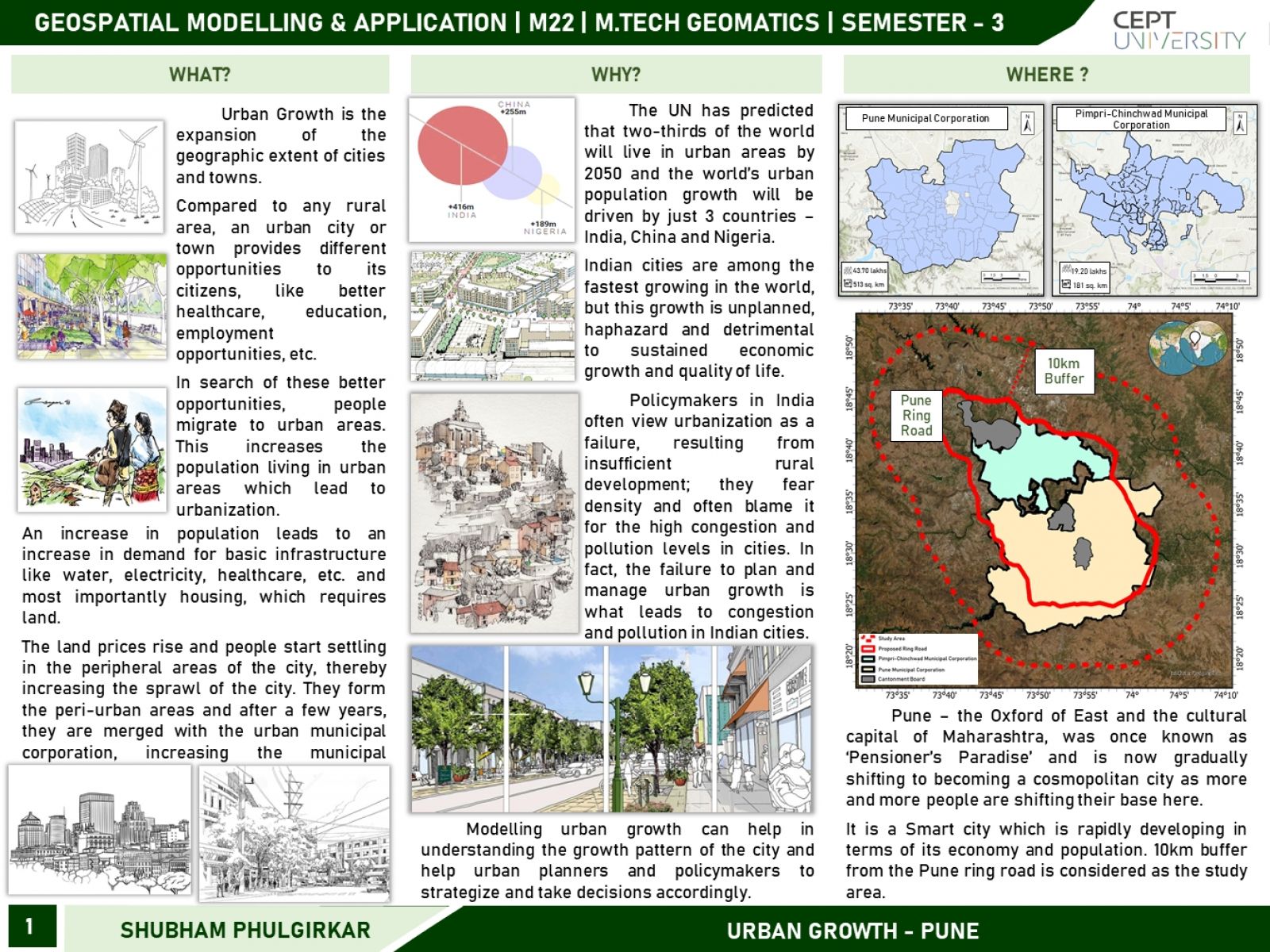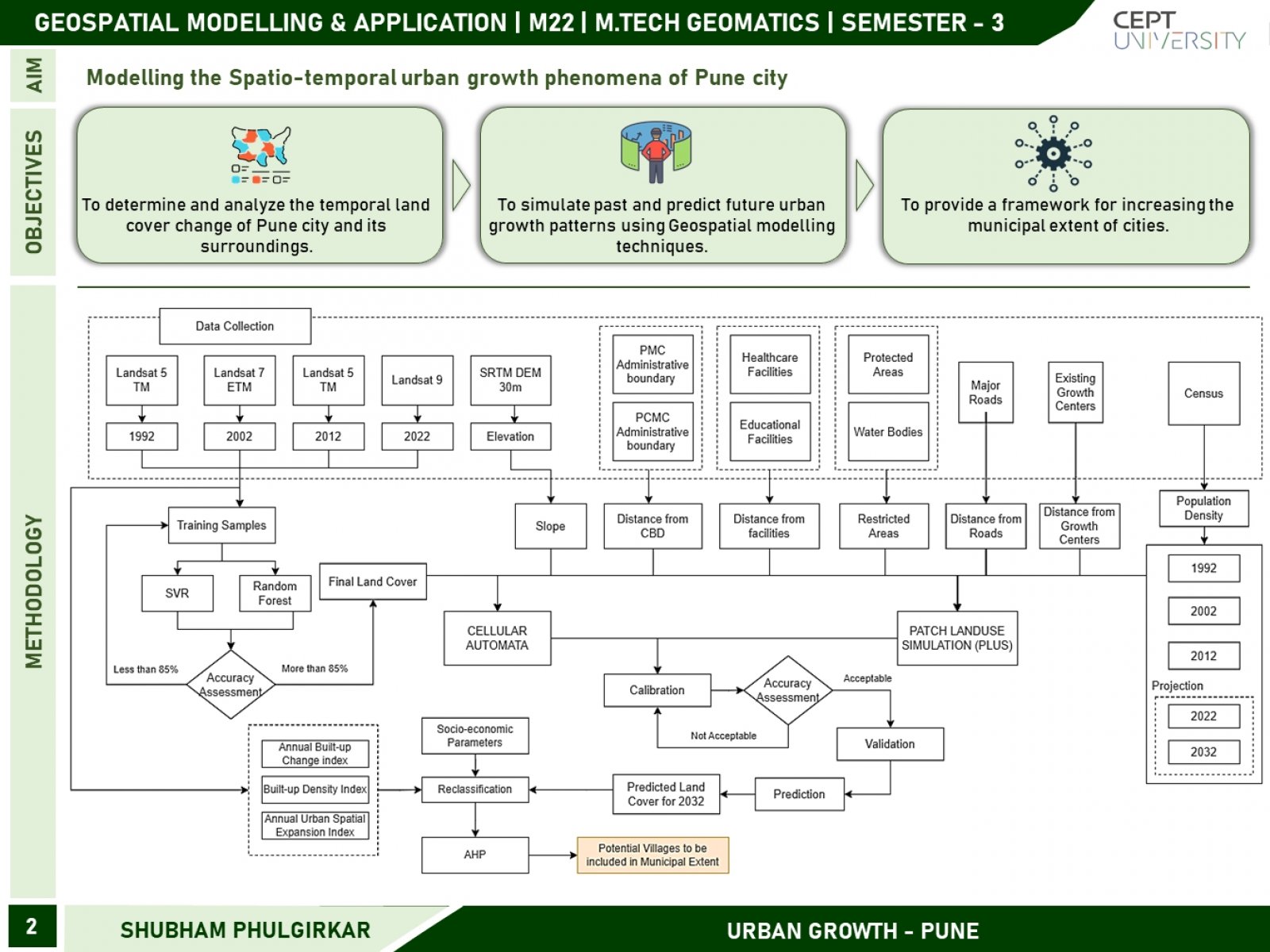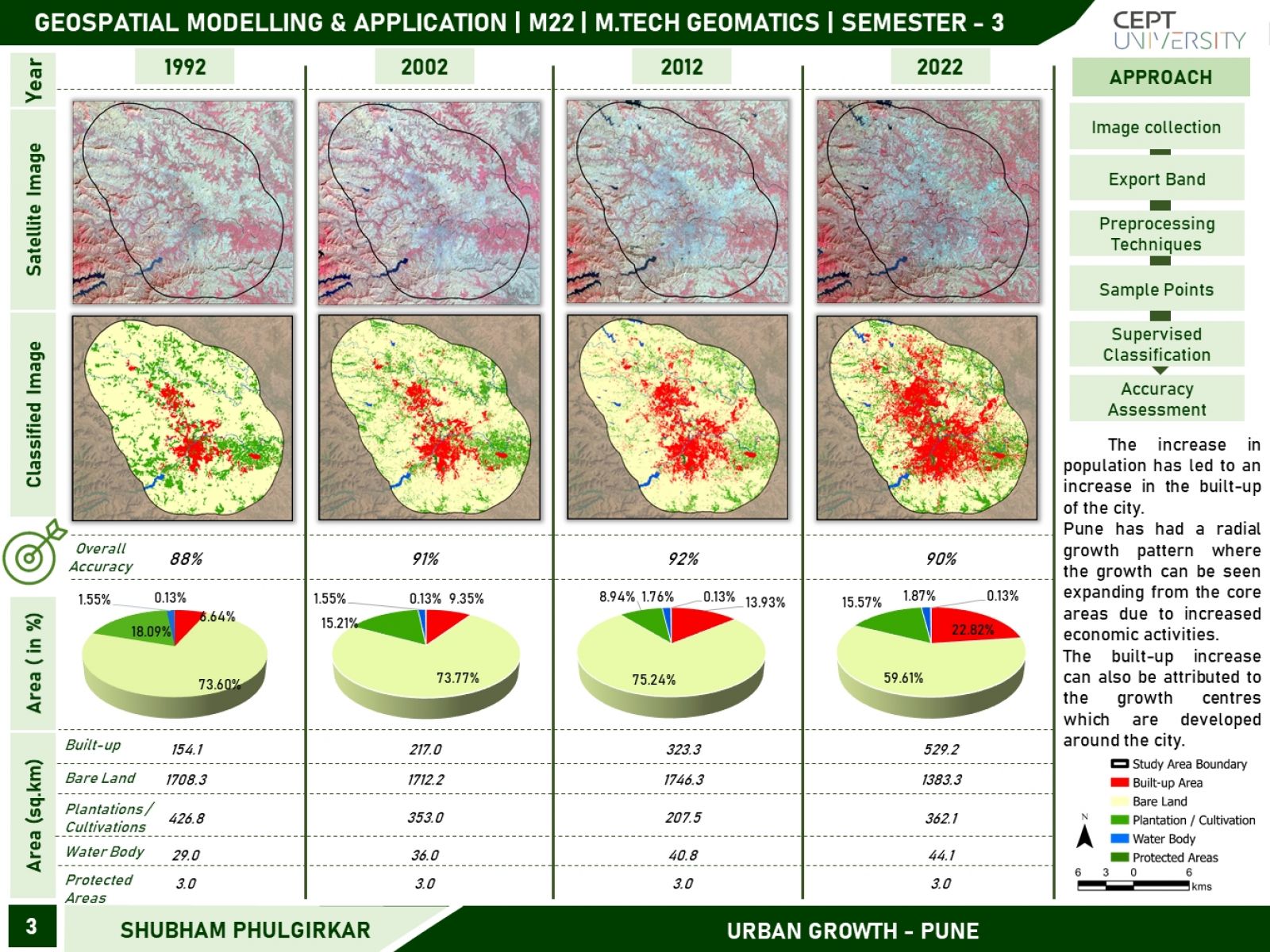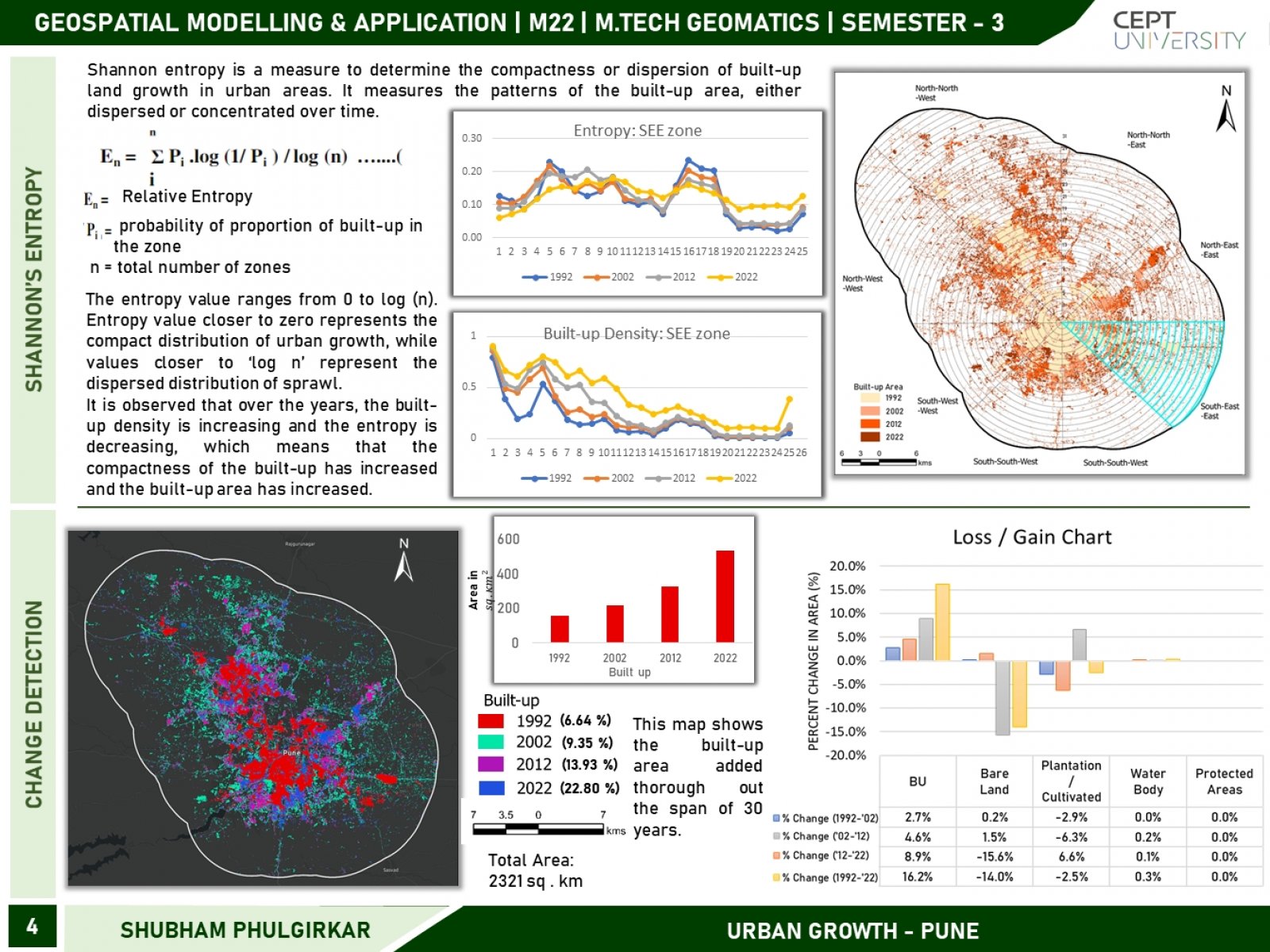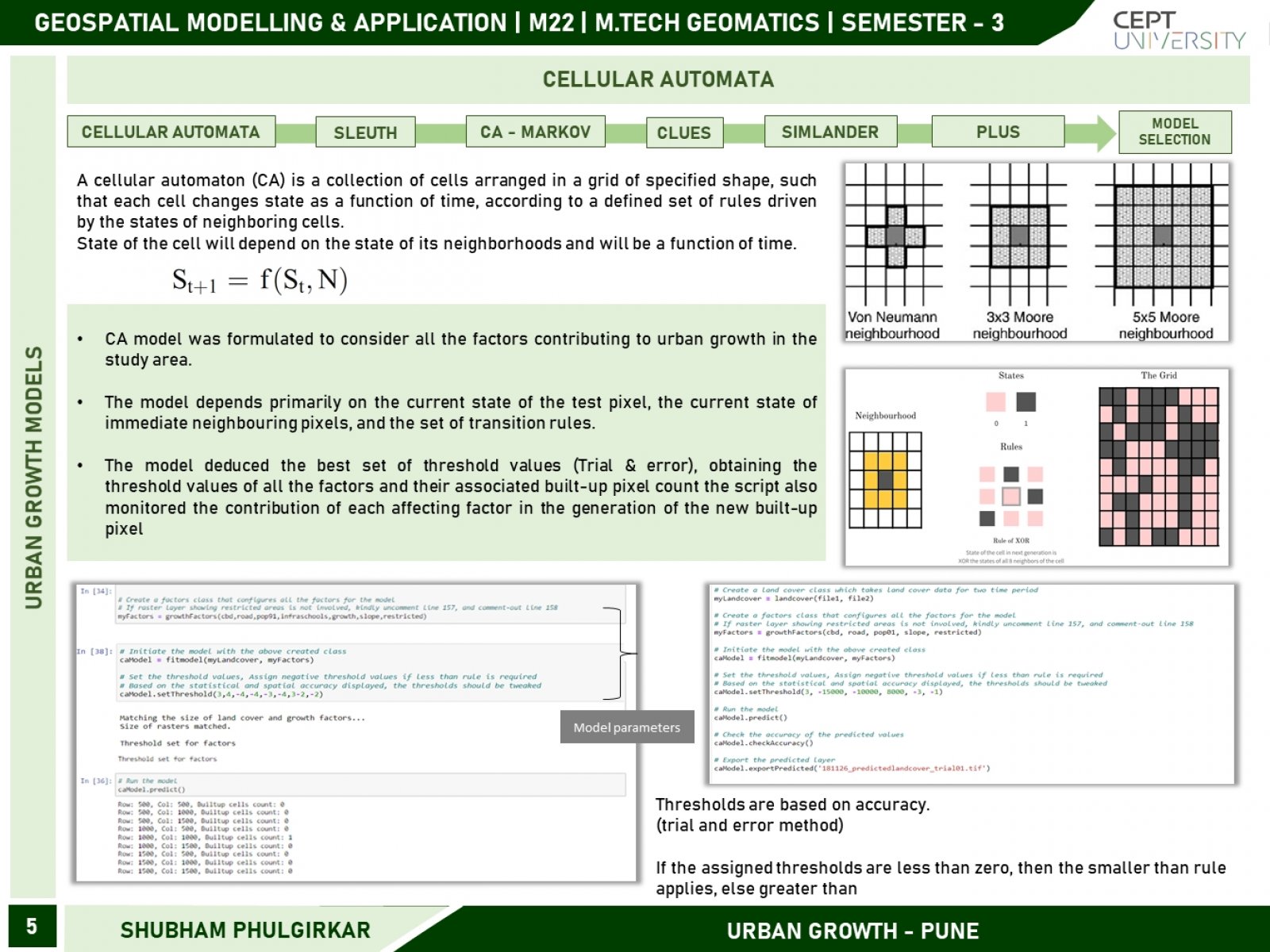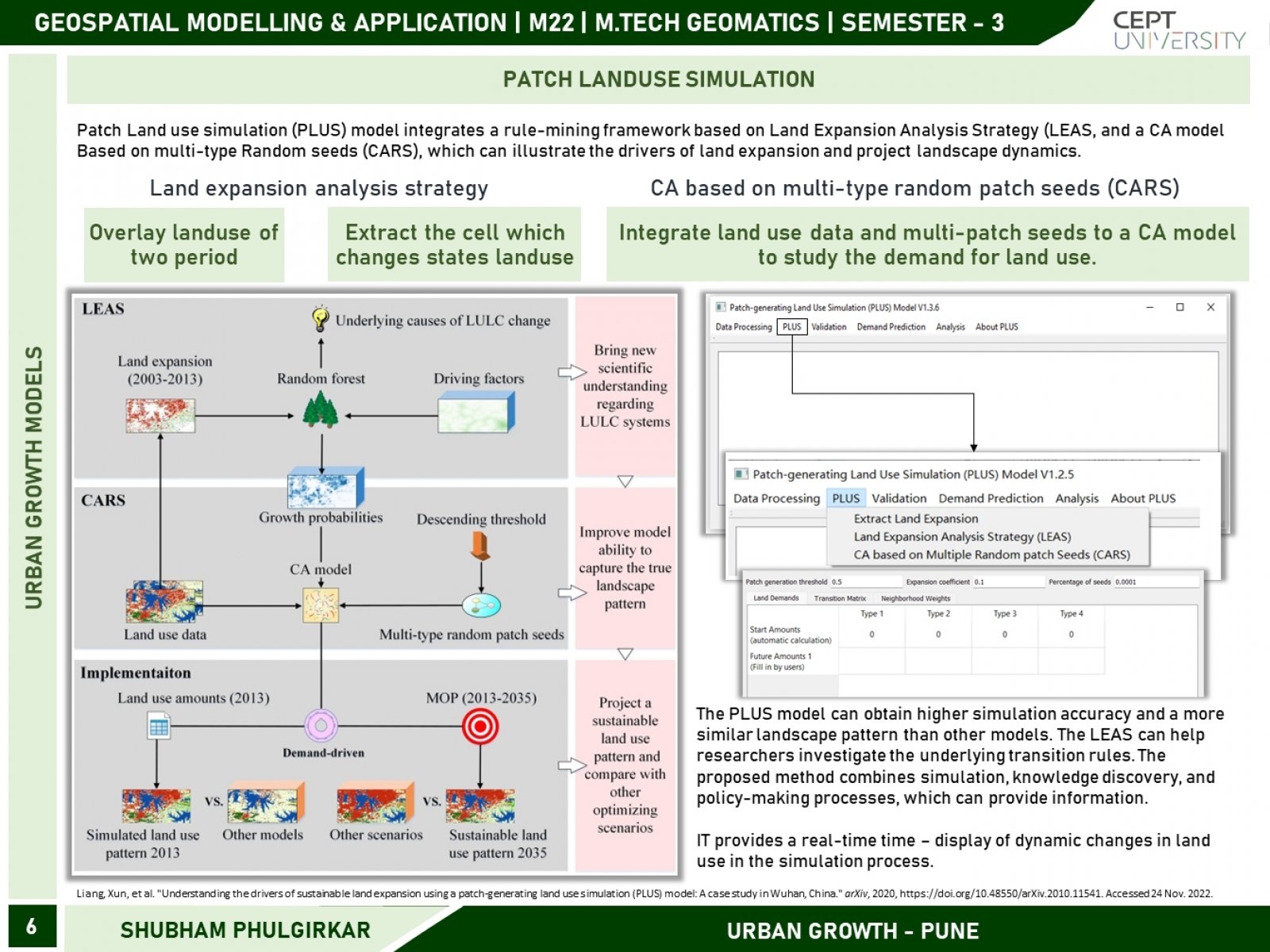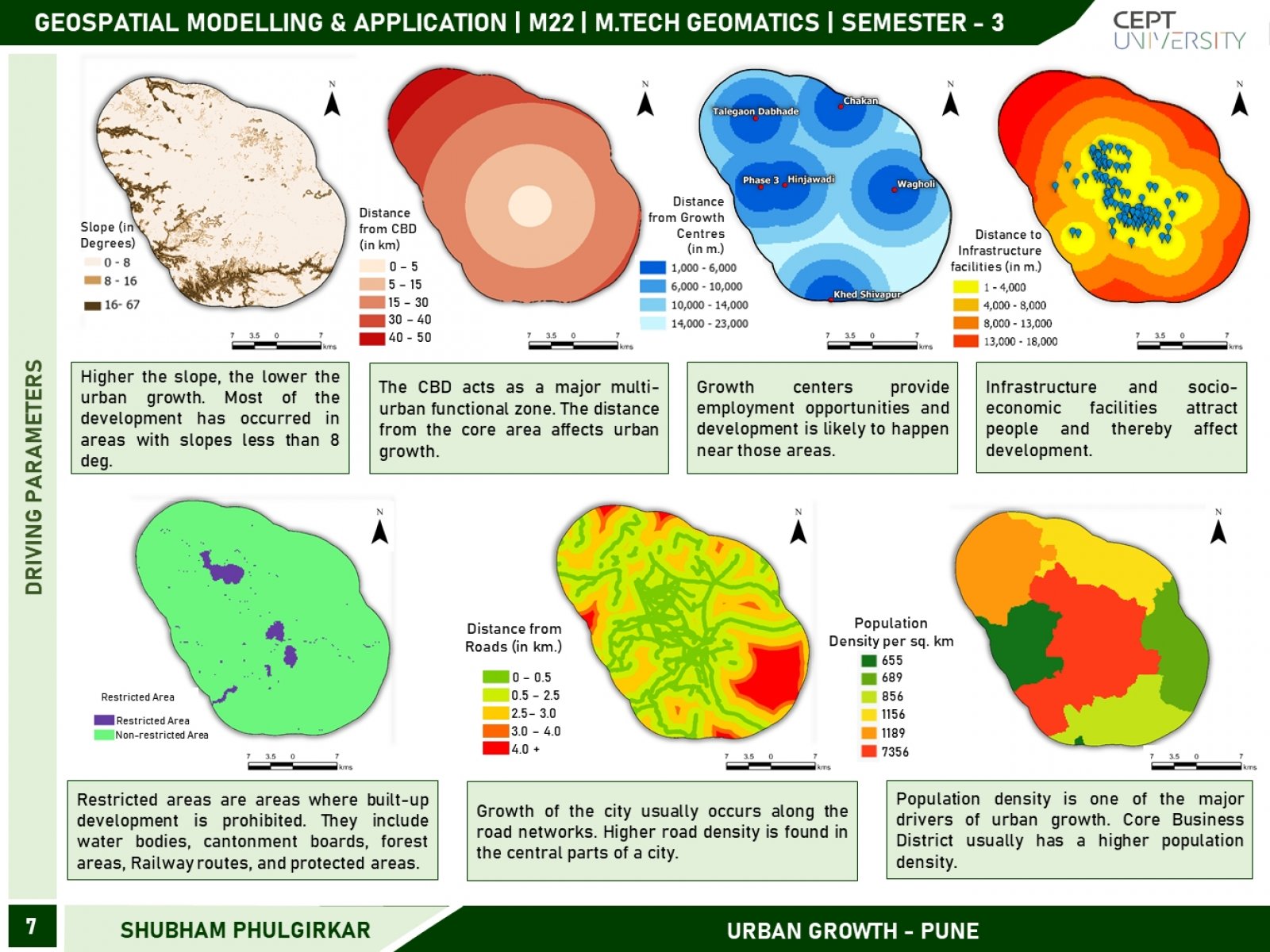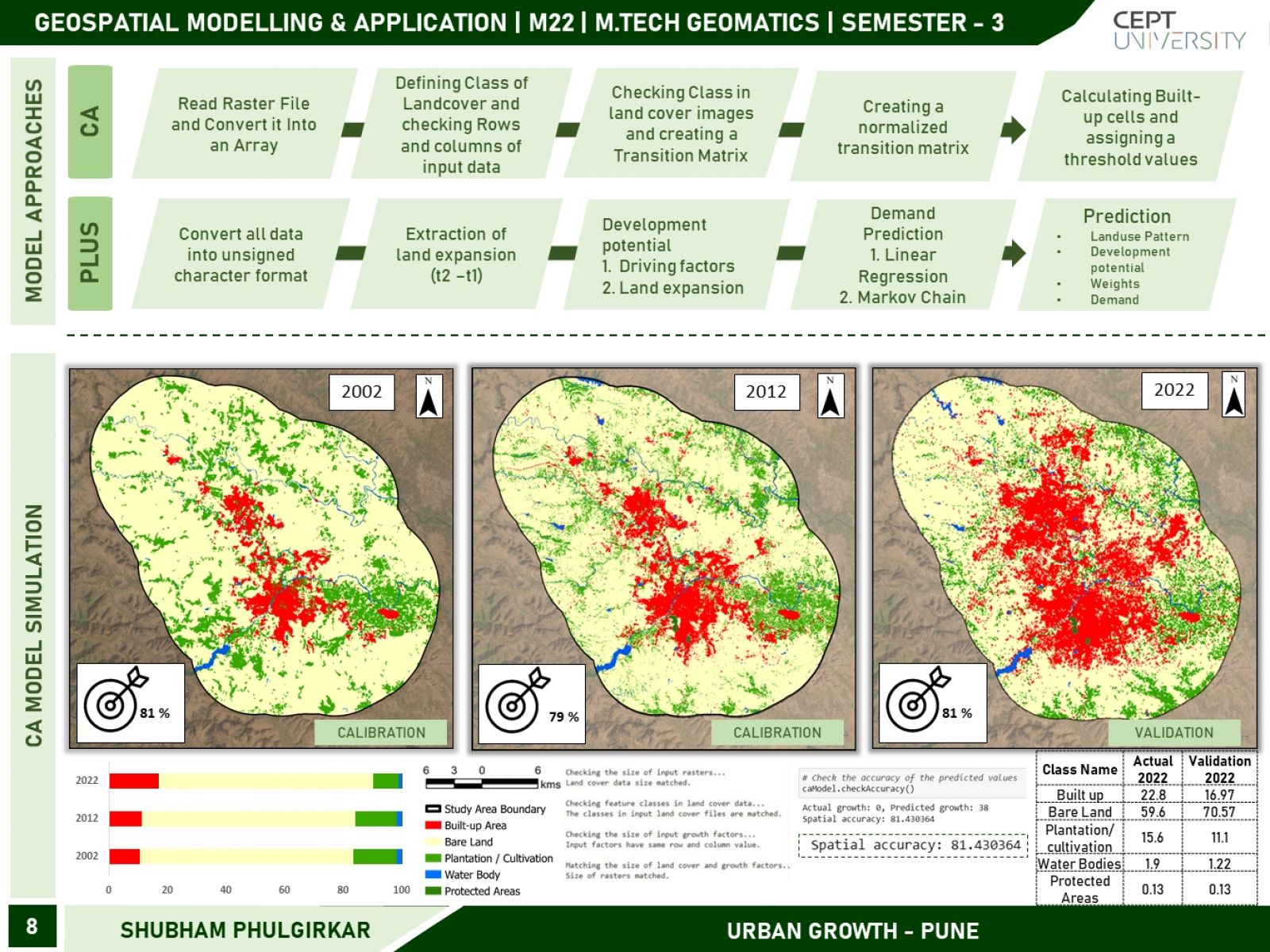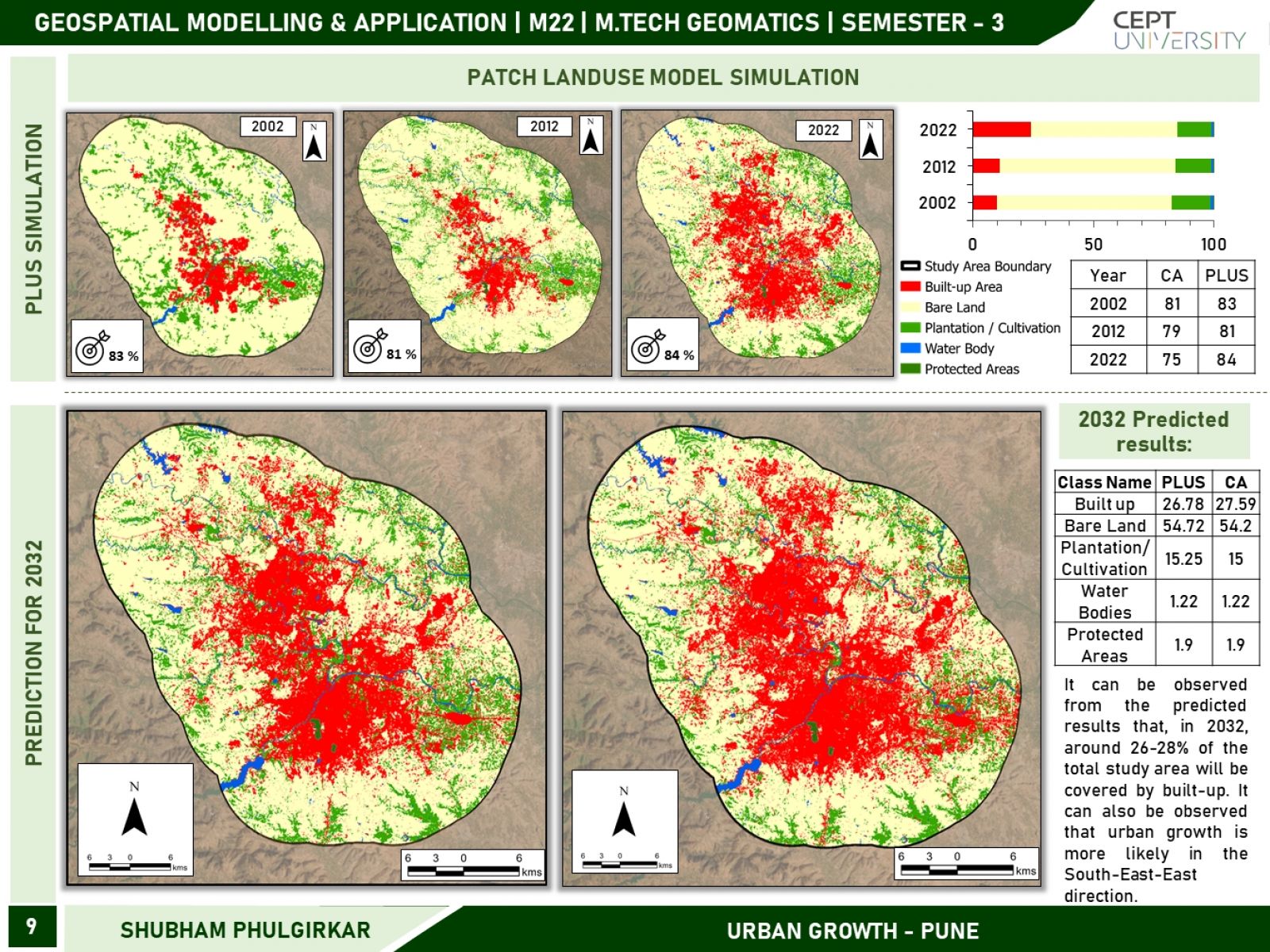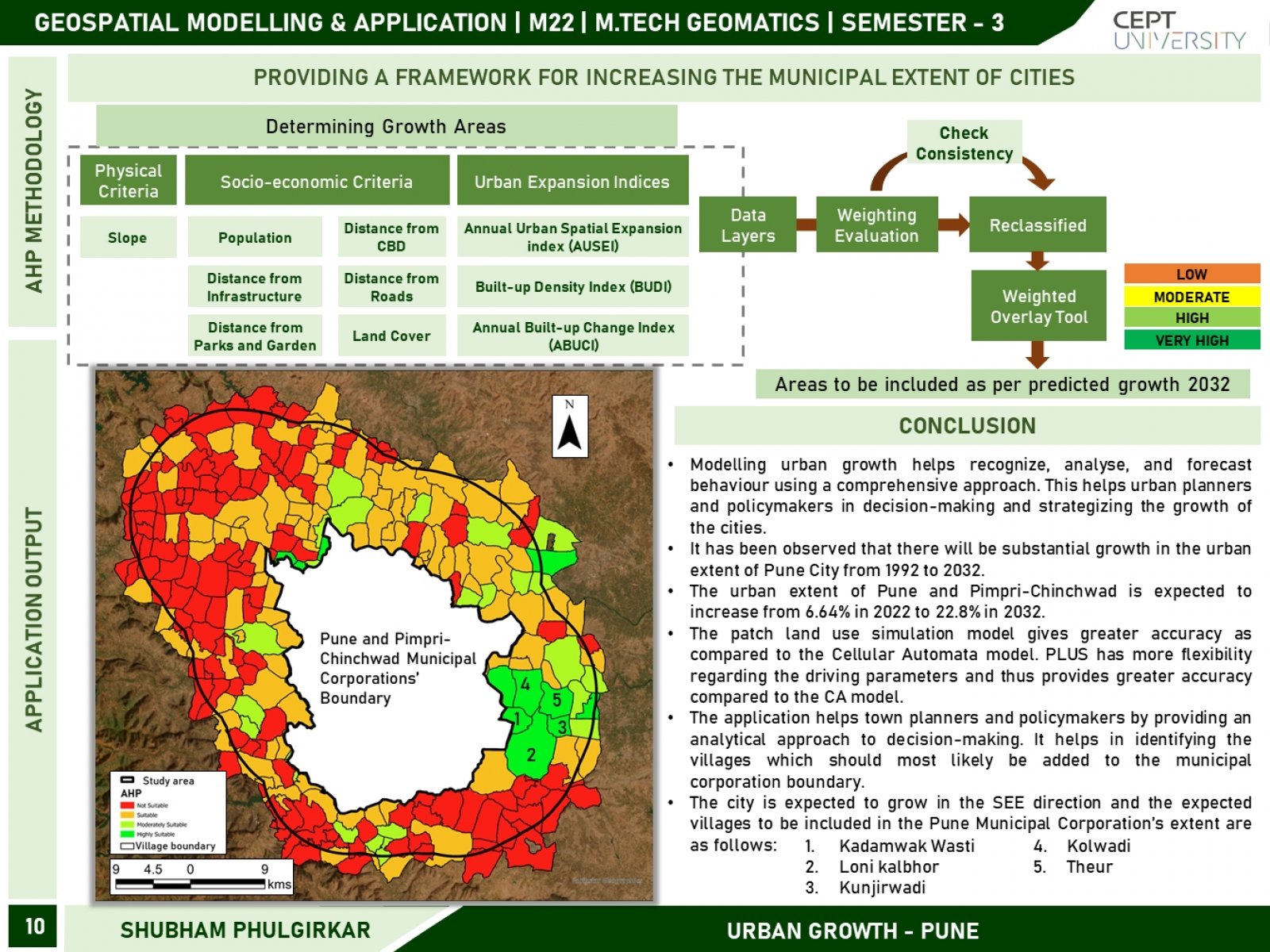- Student PHULGIRKAR SHUBHAM PRASHANT
- Code PGE21342
- Faculty Technology
- Tutor/s Dipak Samal,Dhwanilnath Gharekhan
Urban Growth is the expansion of the geographic extent of cities and towns. An urban city or town provides different opportunities to its citizens, like better healthcare, education, employment opportunities, etc. In search of these better opportunities, people migrate to urban areas. An increase in population leads to an increase in demand for basic infrastructure like water, electricity, healthcare, etc. and most importantly housing. Housing requires land and therefore the urban sprawl of the city increases. Since the land prices rise and people start settling in the city's peripheral areas. They form the sub-urban areas and after a few years, they are merged with the urban municipal corporation, increasing the municipal boundary. This rapid and unplanned urbanization can lead to severe long-term issues for the city like - congestion, overcrowding, increased pollution, increased land prices, increase in slums and squatter settlements. Thus, to resolve these issues and problems, it is important to model the urban growth pattern and predict future growth. Modelling urban growth can help understand the city's growth pattern and help urban planners and policymakers strategize and take decisions accordingly. This study focuses on understanding the urban growth of the city in the past 3 decades followed by the prediction of sprawl for the upcoming decade and an application that provides a framework for increasing the municipal extent of cities.
